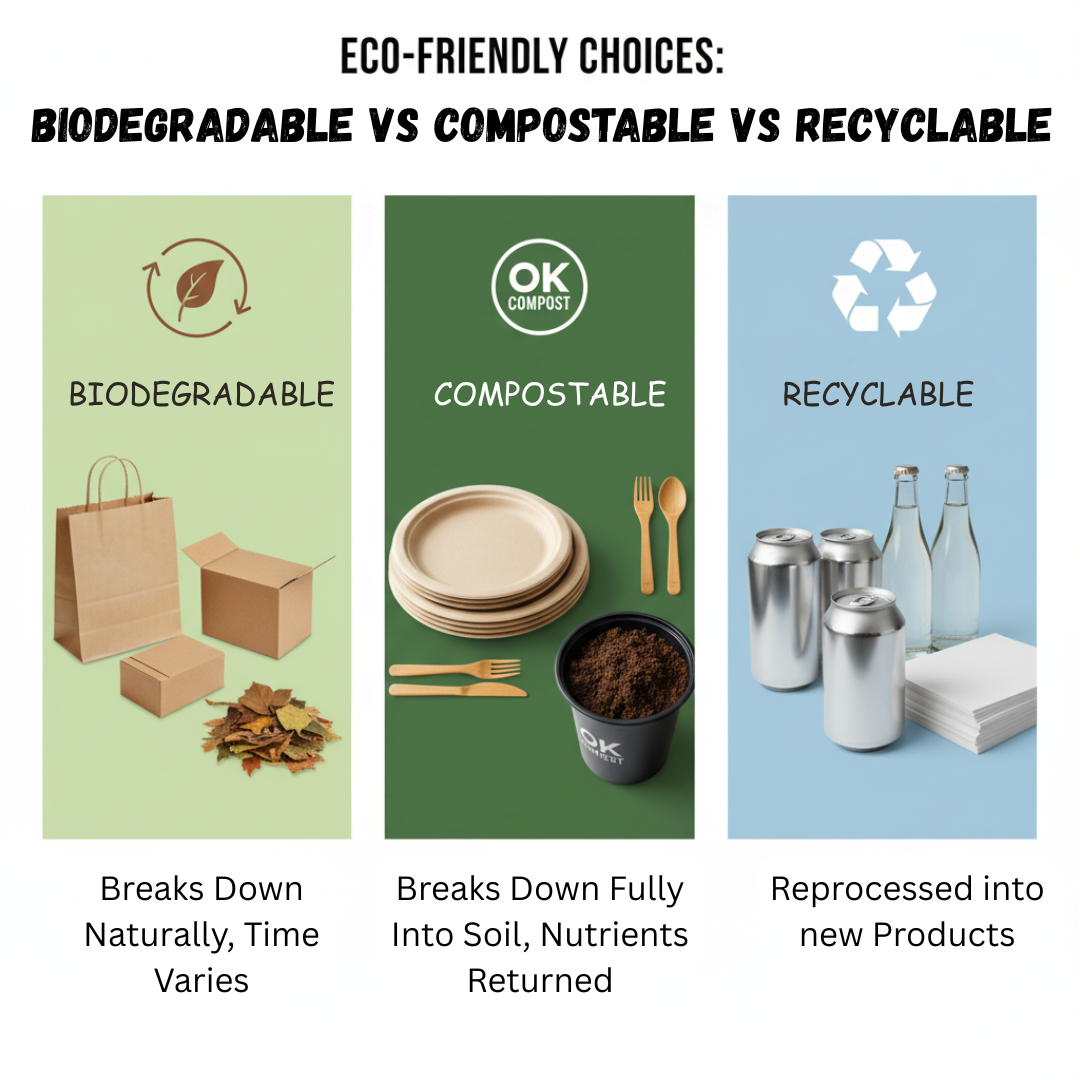
The Difference Between Biodegradable, Compostable, and Recyclable – Explained Simply
Share
Sustainability can get confusing with so many terms thrown around—biodegradable, compostable, recyclable. If you’re trying to make eco-friendly choices for your home, business, or events, understanding the differences is crucial. Let’s break it down in simple terms.
1. Biodegradable Products
Biodegradable items are materials that naturally break down over time due to bacteria, fungi, or other natural processes. However, there’s no set timeline for how long this takes, and conditions like heat, moisture, and microbial activity can greatly affect decomposition.
- Examples: Paper bags, cardboard, some plastics labeled biodegradable.
- Important Note: Just because something is biodegradable doesn’t mean it’s harmless—it might leave microplastics or residues behind if it’s partially synthetic.
2. Compostable Products
Compostable items are a subset of biodegradable products, but with stricter standards. They are designed to break down fully into natural elements (like water, carbon dioxide, and biomass) within a specific timeframe, usually in commercial or home composting systems.
- Examples: Sugarcane bagasse plates, bamboo cutlery, compostable cups.
- Key Benefit: Compostable products enrich soil when properly composted, unlike regular biodegradable plastics which may not fully integrate into the environment.
3. Recyclable Products
Recyclable items are designed to be reprocessed into new products instead of being thrown away. Recycling reduces raw material use but does not remove all environmental impact, and contamination can make recyclable items unusable.
- Examples: Paper, cardboard, aluminum cans, some plastics labeled with recycling codes.
- Important Tip: Check your local Sydney council or recycling facility guidelines because not all “recyclable” items are accepted everywhere.
Why the Differences Matter
Understanding these terms helps you make smarter choices when buying packaging, tableware, or everyday products. For instance:
- A biodegradable plastic cup may eventually break down, but could leave residues in landfills.
- A compostable cup can return to the soil if disposed of in the right composting system.
- A recyclable cup may reduce raw material usage but could still end up in landfill if not properly recycled.
Using the right products and disposal methods ensures your eco-friendly efforts actually make a difference.
Practical Tips for Businesses and Individuals
- Check Labels Carefully: Look for certifications like “OK Compost” for compostable products.
- Separate Waste Properly: Compostable, recyclable, and general waste should be sorted correctly.
- Choose Local Suppliers: Working with Sydney-based suppliers ensures products meet local regulations and reduces carbon footprint.
Educate Your Team or Guests: Awareness increases proper disposal, maximizing environmental benefits.
Conclusion
While the terms biodegradable, compostable, and recyclable may sound similar, they serve different purposes in sustainability. Choosing the right product and disposing of it correctly helps reduce waste, improve soil health, and protect the environment. Whether you’re running a cafe, hosting a party, or shopping for daily essentials, understanding these differences empowers you to make truly eco-friendly choices.
Switching to compostable and sustainable materials wherever possible is a small change that makes a big impact—for your business, your events, and the planet.
